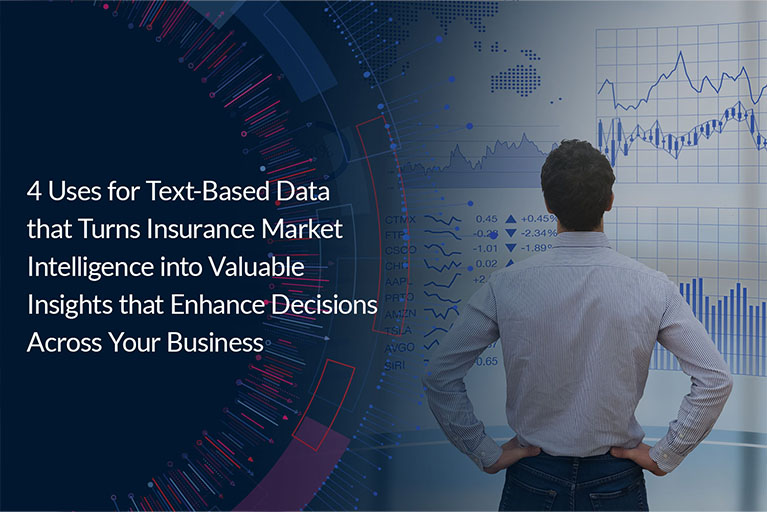Nearly 9/10 executives consider investing in AI and data to be a top priority for their company. But 8/10 of those initiatives are likely to end in failure. In this post, we explore the key reasons behind...
Large Language Models and generative AI tools have transformed the way organisations bring order to the vast amount of online and offline data available. AI can narrow down this data universe to a concise...
Artificial intelligence (AI) offers an incredible amount of opportunity from enhancing productivity to managing information. But, because AI "learns" from the data you give it, it's critical to develop...
In consulting, every opportunity starts with a market trigger, whether it be a change in leadership, a new industry regulation or an unexpected shift in investor sentiment. These trigger events can open...
See how Nexis+ AI and Nexis ® Data+ help management consultants power faster research, credible insights, and compliant AI innovation. As a management consultant, data is your competitive edge. Whether...

A McKinsey article on use of AI in the insurance industry calls data and analytics capabilities “table stakes” in the sector in Europe and North America. The article notes that “External data are the ‘fuel’ that is unlocking the value of artificial intelligence.” What types of text-based data can help you derive actionable insights?
- Current and historical news data and social commentary
- Market and industry data
- Company and financial data
- Legal and regulatory data
Here are four ways that third-party data can bring more insights to decision-makers across the business.
Enhance Risk Assessments with Targeted Text-Based Datasets
Several sources of text-based data can enable analysis that improves risk awareness.
By analysing news data, for example, insurers can identify emerging risks, such as natural disasters or social unrest, and adjust their underwriting practices accordingly. In addition, ESG-specific news can provide insights that help your organisation stay aligned with ESG commitments while also revealing potential reputational risks if third parties you rely on turn up in news mentions related to poor ESG performance.
Company and market data also add value to risk analysis. By analysing data related to the financial performance of your own company, as well as other companies in your portfolio, you can identify areas of potential risk and proactively address them.
Regulatory and legal data analysis remains a top need, as well. As with other organisations across Financial Services, insurance companies are subject to a host of global regulations against financial crime, bribery and corruption. Just last year, the UK’s Financial Conduct Authority announced a settlement in excess of $9.4M with a UK-based subsidiary of a multi-national insurance brokerage for financial crime control failings.
From conducting risk assessments to undertaking third party due diligence and monitoring, datasets covering sanctions, watchlists, and politically exposed persons can help you accelerate risk management processes to identify regulatory risks sooner. Furthermore, by monitoring legal data related to regulatory changes, you can keep your policies and practices up-to-date even as laws evolve. Similarly, by analysing legal data related to enforcement actions or penalties, you can pinpoint areas of potential risk to inform strategic decision-makers.
Improve Underwriting with Third-Party Data
Deloitte notes that underwriters today “… are being challenged to move from hindsight, where underwriting decisions are evaluated after the fact, to foresight, where portfolios are actively monitored, to understand the impacts of risks added to their books of business in real time.” This pressure to anticipate risk and optimise performance demands looking beyond internal data for insights.
High-volume company and market data—along with global news (particularly adverse media)—can power predictive analytics, enabling you to spot emerging threats associated with insuring particular industries or companies.
By analysing data related to market trends, financial performance, and other relevant factors, you can gain much-needed insights to adapt products options to reflect the level of risk associated with a particular industry or company.
Manage Claims More Effectively with Text-Based Data Analysis
Monitoring news data related to incidents that may lead to claims, such as natural disasters and severe weather events, gives you the foresight mentioned earlier so you can deliver the right level of assistance and support when the need arises. In this case, historical news data can be particularly useful. Analysing media coverage of a past hurricane, for example, can
Legal data can also be used to help insurers manage claims more effectively. By monitoring legal data related to court decisions or settlements in cases like those being handled by your organisation, you can better predict the outcome of claims and adjust settlement strategies accordingly. Likewise, integrating legal data related to fraud or other deceptive schemes into analytics applications can help you detect and prevent fraudulent claims.
Uncover Game-Changing Competitive Intelligence in Text-Based Data
News, company and market data can also be used to help insurers better understand their competitors and the broader market. By analysing data related to competitor market share, pricing, marketing strategies, and product offerings, you can anticipate competitor moves, identify new opportunities for growth and expansion and set yourself up for a competitive advantage. .
For example, with news and social commentary data you can conduct trend and sentiment analysis to gain valuable insights into emerging consumer needs and perceptions. This allows you to fine tune your strategies based on changes in consumer behavior or preferences as they evolve. Legal data related to emerging risks, such as cyber threats or climate change, can also inspire new products and services to address those risks.
Anna Maria D’Hulster, former Secretary-General of the international insurance industry think tank Geneva Association, an international insurance industry think tank, notes “Going forward, access to data, and the ability to derive new risk-related insights from it will be a key factor for competitiveness in the insurance industry.”
Where can you find the variety and volume of data sources you need? Talk with us to learn why our users say Nexis Data as a Service is the one-stop-shop for text-based data.